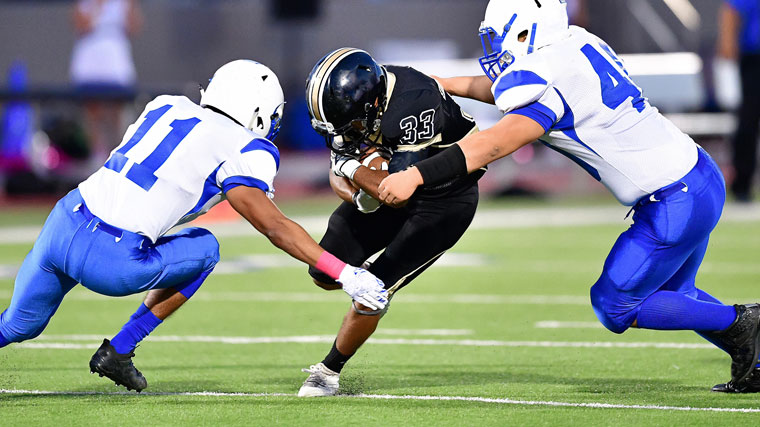Concussion Awareness, Cases Rapidly Rise Among High School Sports

Find Your Perfect Match
Answer a few questions and we'll provide you with a list of primary care providers that best fit your needs.
Growing evidence of the psychological impact (confusion, trouble concentrating, memory loss, irritability) on adolescents who've experience concussions has dramatically changed the way head injuries are treated – from parental and coach involvement to mandatory state requirements. And it is all with good reason.
High school athletes who take the field or court this fall are walking into a much different game than previous generations experienced.
According to the American Medical Society of Sports Medicine, as many as 3.8 million concussions occur in the United States each year during competitive sports and recreational activities. Among children between the ages of 14 and 19, the number of concussion cases reported during emergency room visits has jumped 200 percent in the last 10 years, according to the American Academy of Pediatrics.
The jump in concussion cases may come from both an increase in incidences and better diagnosis.
Some of the symptoms that may not have been picked up before are now being identified as a concussion. Athletes themselves are recognizing the significance of concussions and the long-term implications, and they are more apt to report them because there's a plan on how to treat them.
What Is a Concussion?
A concussion is a transient change in how the brain works as a result of trauma. In most cases, the trauma occurs when the head experiences significant impact from another person or object. Concussions occur in all sports but have the highest incidence in those with a lot of contact such as football, hockey, soccer, rugby, and basketball.
A concussion is best diagnosed by its symptoms. The most common symptom of a concussion is a headache. Other symptoms may include sensitivity to light, sound, nausea, vomiting, dizziness, and difficulty with memory. Concussions don’t always create immediate or drastic symptoms. In fact, up to 90 percent of concussion cases do not involve loss of consciousness, according to the Centers for Disease Control and Prevention.
The debate over concussion management has been in the forefront of media in recent years. Cases involving collegiate and professional athletes have only furthered the focus on concussions and the fact that they can have a serious effect on the life of young athletes.
The Ohio High School Athletic Association requires students and parents to sign a form saying they have been informed about concussions and understand the impact the injury can have on the student’s health. Students who have sustained a concussion have to pass a mandatory evaluation by a doctor before returning to a sport. And even then, they are only allowed to re-enter the sport through graduated steps until it is proven they are ready to be exposed to normal play.
Premier Health’s ImPACT Testing
Premier Health is an ImPACT (Immediate Post-Concussion Assessment and Cognitive Testing) provider for concussion management services. ImPACT is a computer-based neurocognitive test that aids physicians in the diagnosis and treatment of concussions. Premier Health will help roll out ImPACT neurocognitive baseline testing at all of its 44 high school partner athletic programs in Southwestern Ohio. Baseline testing is not required to diagnose and treat a concussion, but it is important because it offers normative data that can be used if a student athlete should sustain a head injury.
Services like ImPACT help educate parents and students about the seriousness of concussions, which sits in contrast with a time when injuries may have previously been downplayed. The hits that once caused players to say “I’ve had my bell rung” may now carry a long-term consequence which gives players and parents reason to pause.
Still, physicians say the fear of concussion should never keep a student from participating in a sport they love. Sports play an important role in school involvement, often times motivating students both on the field and in the classroom.
There are a lot of benefits to sport. Kids learn team work, how to lean on each other and how to develop themselves physically, emotionally and mentally. Fear should not cause parents to take their kids out of sports. At the same time, concussions are a pretty significant concern. It comes down to each family deciding what is best for themselves.
Find Your Perfect Match
Answer a few questions and we'll provide you with a list of primary care providers that best fit your needs.
Source: American Medical Society of Sports Medicine; American Academy of Pediatrics; Centers for Disease Control and Prevention; Ohio High School Athletic Association




